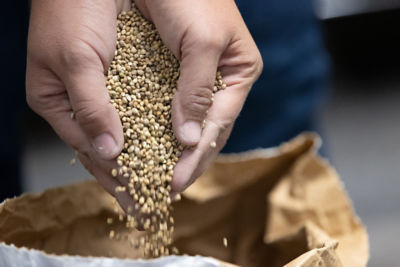Causal Agent
Septoria lycopersici
At least two races have been reported.
Distribution
Worldwide
Symptoms
Symptoms first appear as small, dark, water-soaked lesions on the older leaves. These enlarge to form circular lesions about 5 mm in diameter with black or brown borders and gray centers peppered with small black fungal sporulating structures (pycnidia). Lesions on the stem, petiole and calyx tend to be more elongated, with pycnidia developing in the center. When disease is severe the lesions coalesce, resulting in the leaves collapsing and eventual defoliation of the plant.
 Pycnidia in center of stem lesions.
Pycnidia in center of stem lesions.
Conditions for Development
This fungus can survive on debris from previous crops, as well as on several weeds including:nightshade, horse nettle, jimson weed and ground cherry. Extended periods of high (100%) relative humidity and temperatures between 20-25°C {68-77°F) favor infection and disease development. Numerous fungal conidia are exuded from the pycnidia when the humidity is high. They can then be spread by wind and splashing water from rain or overhead irrigation, on workers’ clothing and tools, on cultivation equipment and by insects.
Control
A good fungicide spray program in conjunction with cultural practices, such as removing or turning under all plant debris and a three-year crop rotation, can help reduce losses from this disease.



